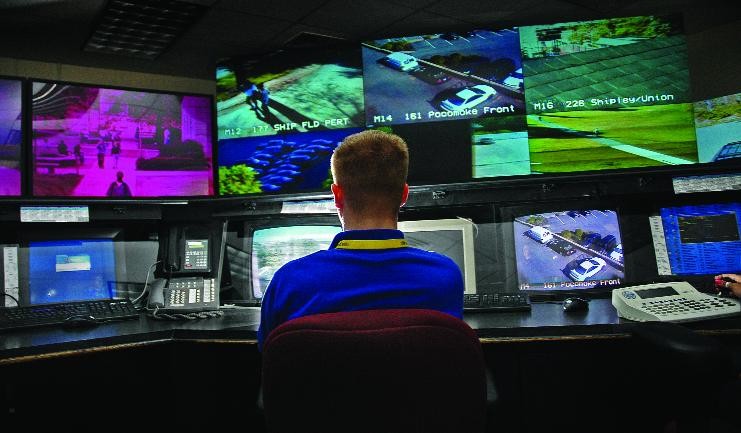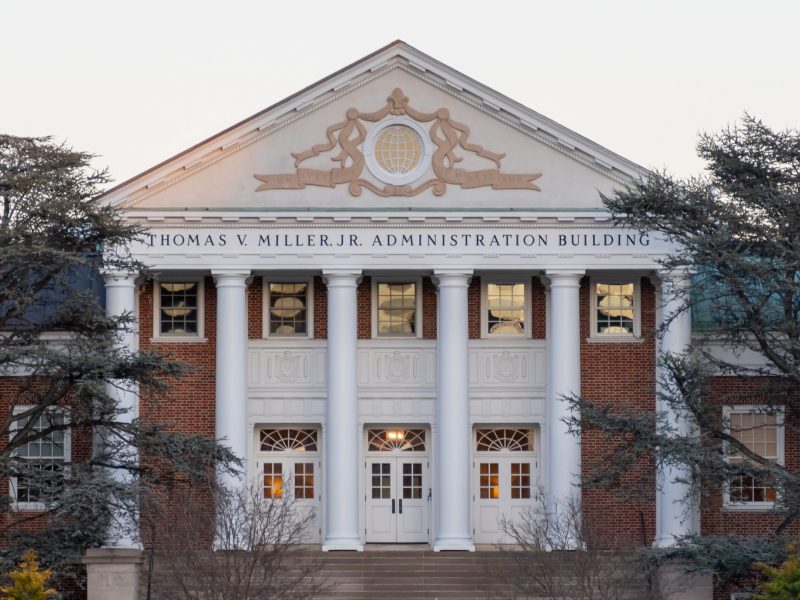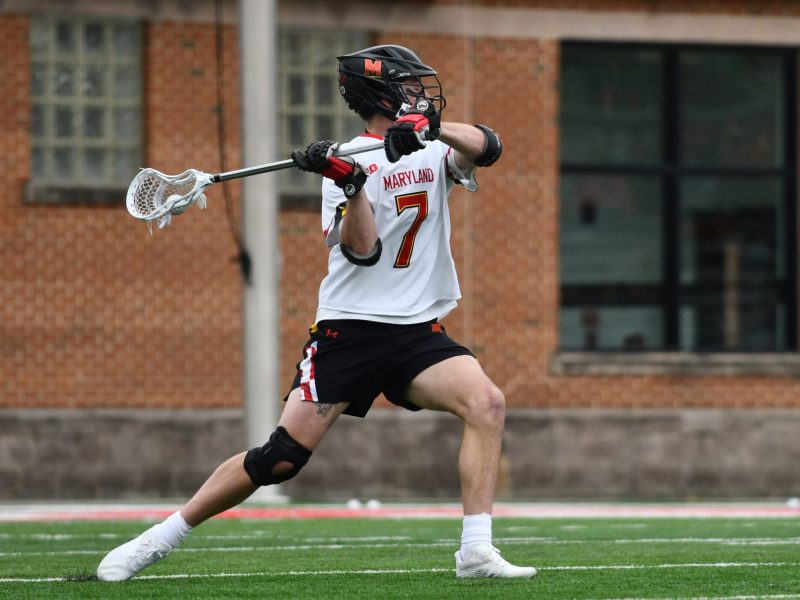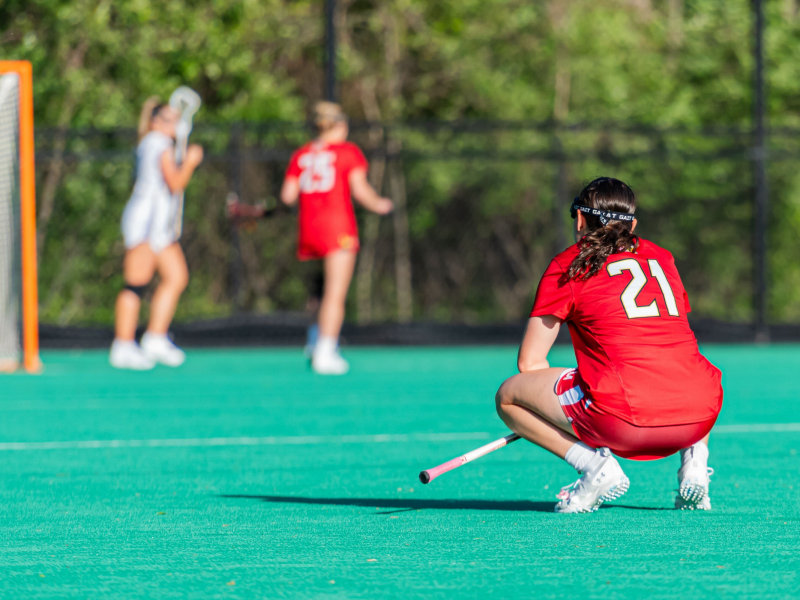
Senior William Falk monitors multiple screens in the Department of Public Safety’s control room. More than two dozen screens are used to monitor the campus 24 hours a day.
A dozen big-screen televisions and video feeds cover the back wall of a room atop the Pocomoke building overlooking Route 1 near Fraternity Row, showing live feeds of students and staff as they travel nearly every corner of the campus.
Public safety employees sit in comfortable-looking red chairs, their faces intently staring at the half-light of computers screens’ electric glow, watching for any signs of trouble on a campus constantly under threat from criminal outsiders.
This is the Department of Public Safety’s Security Operations Center, a techie’s dream come true with its hundreds of camera feeds, and a criminal’s nightmare with its comprehensive surveillance covering nearly every area of the campus.
The system could get even more high-tech as the department tests out a computer program in the coming weeks that will recognize suspicious behavior automatically – such as cars zig-zagging through parking lots or people lurking in corners of buildings – and alert staff of the disturbance so they can more closely watch the area in question.
But for now, four employees, sometimes more, lean in over a computer desk in front of the screens, remotely controlling cameras perched atop blue light phones, and roofs of buildings, trying to catch as much as they can with watchful eyes.
Sgt. Steven Kowa, who has run the observation center for the past 10 years, says he and his team have helped decrease crime on the campus and make the area unfriendly to criminals because they provide crucial back-up to patrol officers and report crimes they witness over the live feeds, sometimes long before dispatchers receive emergency calls from students. The team’s unique points of view can provide officers with updated information on their way to calls and cameras help track fleeing criminals, allowing officers to catch the law-breakers, Kowa said.
And what Kowa’s staff doesn’t pick up live, they can often review on tape after an incident occurs. Investigators regularly request taped video feeds from the center if they think the film could lead to a crime’s resolution. In several cases, Kowa said, arrests have been made as a result of what has been captured on video, including a 2003 robbery that occurred in the University Book Exchange parking lot just outside the operations center.
“One of the folks was doing her rounds on the cameras and saw a strong-armed robbery in progress out there,” Kowa said, gesturing toward a window, “There happened to be a few cameras in the area and one followed the men as they fled [toward Fraternity Row].”
Kowa said camera operators directed officers to the criminals, who had taken up hiding places near cameras, and both men were arrested.
Additionally, a bomb threat in the South Campus Dining Hall last May was resolved when employees traced the e-mailed threat to McKeldin library and located video footage of the suspect writing the letter. The suspect was identified and arrested, Kowa said.
Unbeknownst to students, the employees also frequently run “video escorts” that follow people around the campus during high-risk hours at night to ensure they arrive safely at their destinations.
But if some students might find that creepy, Kowa defends what some might call a “Big Brother” mentality prompted by the surveillance: “At least we make sure nothing happens to them while they’re in our care,” he said.
“We want to be aware of people’s concerns, but everything that’s [visible] here is in a public place,” he said. “Instead of feeling afraid I’d think people would feel more comfortable.”
There has been some concern, however, about overstepping privacy. In one incident, a surveillance operator was fired after he was caught zooming into a student’s window. Kowa said the employee wasn’t spying on students, though; he was trying to watch a football game on a TV in the room.
Since then, new technology was installed that covers the monitor screen with a blur when a camera tries to zoom in on a dorm window.
Steven Lane, who has worked with the department for two years and is now a supervisor, said current coverage on the campus is good but adding more cameras would be helpful.
“The coverage is getting to where we ideally would like it to be,” he said, “[But] you could always use extra coverage.”
Contact reporter Jeremy Arias at ariasdbk@gmail.com.



